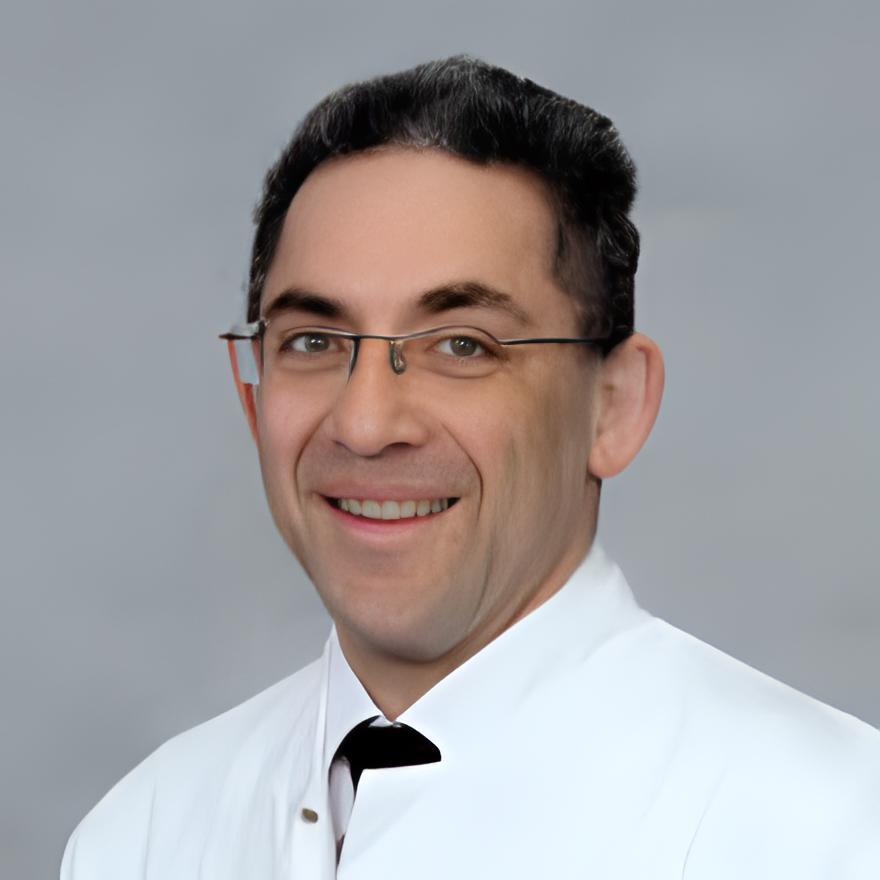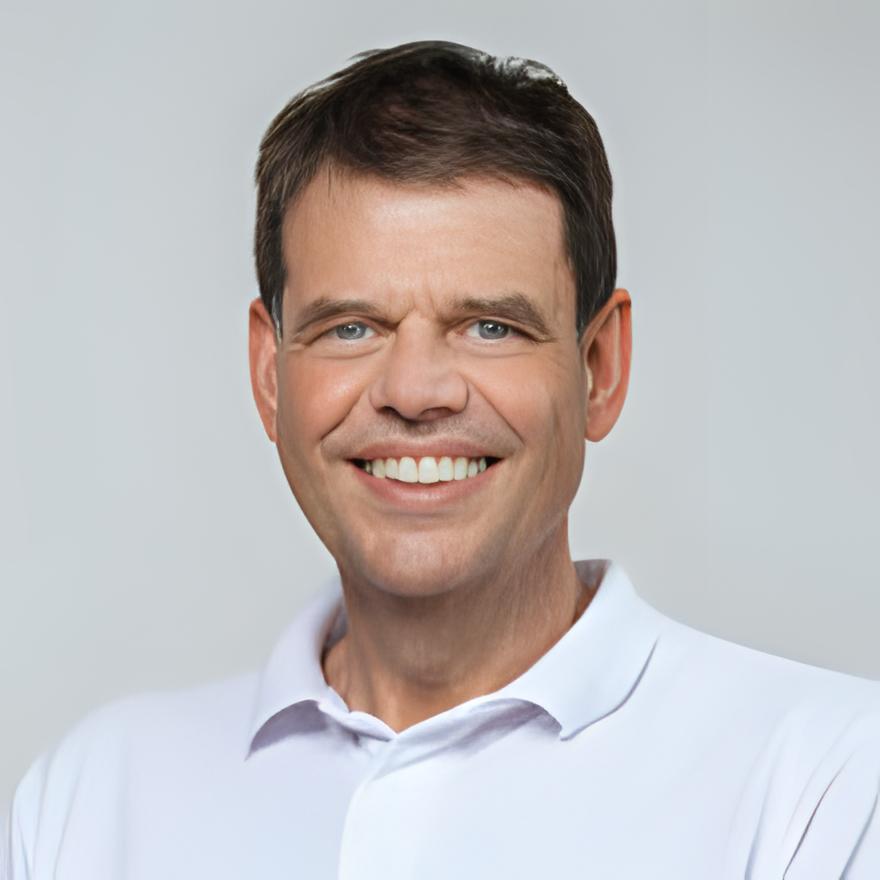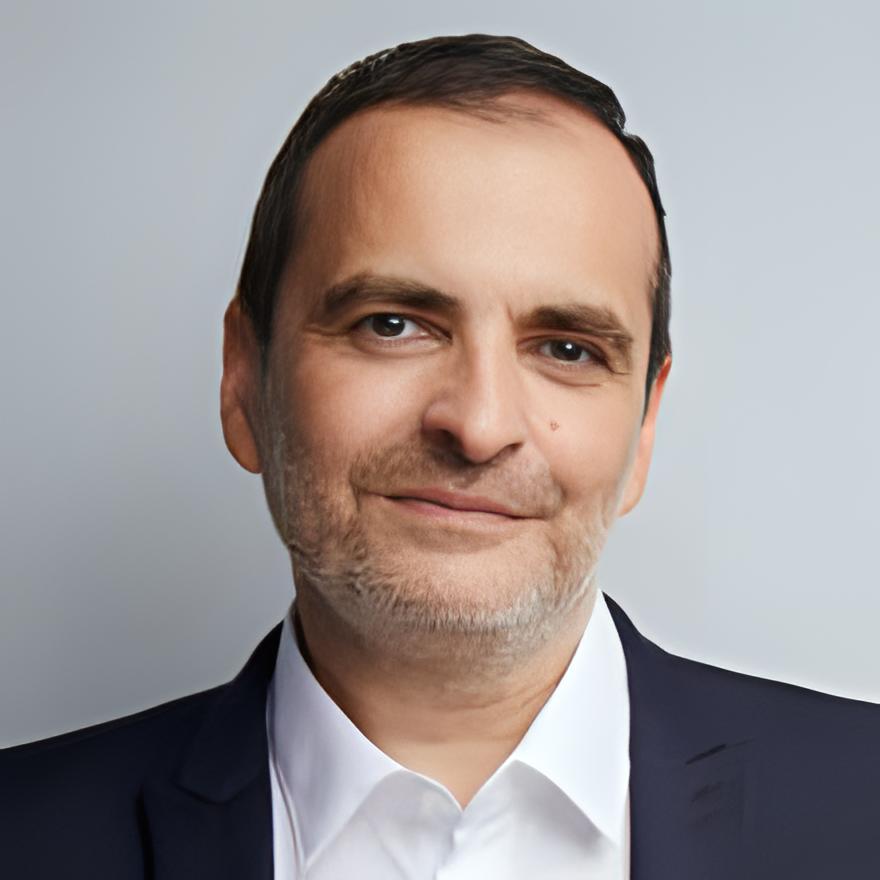Effective Treatment for Spinal Cord Injuries
According to the World Health Organization, 250.000 - 500.000 people suffer spinal cord injuries yearly. When spinal injuries happen, they need to be treated and rehabilitated right away. Restoring the body's sensory and motor functions ASAP gets the person back to his daily life. On the other hand, if help doesn't come quickly, the situation could worsen, leading to severe damage to the neuromotor system or even death.
What is spinal cord injury?
Spinal cord injury is a severe injury to the spine. It is possible, even with minor bruises or regular stretching. According to statistics, from 40 to 80 people per million get spinal cord injuries yearly. 90% of the damage occurs due to traffic accidents, falls, etc. At the same time, the percentage of spinal diseases is constantly increasing. Such damage to the spinal cord can occur due to illness occur, for example, with oncology or multiple sclerosis.
Symptoms and signs of spinal cord injuries
Symptoms depend directly on the type and severity of the injury. Doctors talk about such damage to the spinal cord:
- Complete. The patient loses sensitivity in all organs or parts of the body.
- Partial. The patient may have some limited functions of organs and limbs.
As a result of spinal cord injury may be observed:
- severe back and neck pain;
- loss of sensitivity in the hands, feet, and fingers;
- weakness in the body;
- lack of coordination and balance;
- paralysis in any part of the body;
- loss of bowel and bladder control;
- cough, problems with breathing function (it isn't easy to inhale).
If a person feels similar symptoms after a car accident, sports, falling on his back, hitting, or physical work, it is necessary to consult a doctor about the diagnosis of spinal cord injury.
What is the danger?
The spinal cord is the essential part of the central nervous system associated with the brain. It ensures the work of all departments of the central nervous system. For example, it allows a person to move and control the neck, trunk, arms and legs, pelvic organs, intestines, excretory and reproductive system.
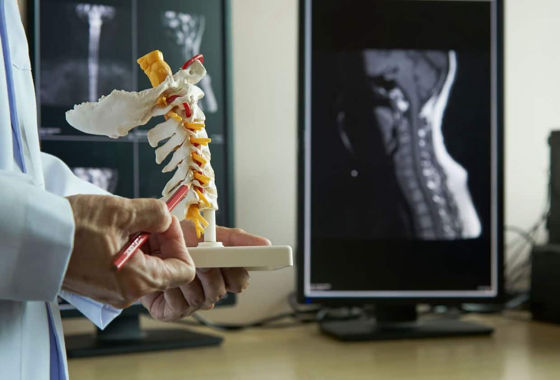 Spinal cord injury often leads to paralysis of the body and loss of sensitivity and control over the arms, legs, and trunk movements.
Spinal cord injury often leads to paralysis of the body and loss of sensitivity and control over the arms, legs, and trunk movements.
People with spinal cord injury have a 2-5 times higher risk of death from any circumstances than people without it. The risk of deterioration and death is associated with secondary complications, such as:
- bedsores;
- muscle atrophy;
- problems in the work of the intestine;
- cardiac arrhythmia;
- urinary tract infections;
- respiratory tract infections;
- respiratory disorders (apnea);
- osteoporosis (decrease in bone density);
- chronic pain.
What is the best strategy for treating spinal cord injury?
Treatment of spinal injuries can take several weeks to two years, depending on the complexity. In severe cases, the restoration of limb mobility is only partially possible.
Given the complexity of the lesion, the treatment procedure may include the following steps:
- Preliminary diagnosis of spinal cord injury;
- Anesthesia (local or general anesthesia);
- Surgical intervention (for fractures or dislocations of the spine);
- Medical treatment aims for the speedy restoration of damaged tissues' function.
- Rehabilitation of movement and sensitivity.
The methods used may differ depending on the type of spinal cord injury and the individual characteristics of the patient's body.
Who can help with rehabilitation and spinal surgery?
What to expect after spinal cord injury surgery?
Surgery plays an essential role in therapy. As a result of the injury, the spine and spinal cord are damaged. However, the operation solves the problem of decompression and stabilization.
Decompression relieves pressure on the spinal cord. Spinal stabilization surgery often involves various implants. These are rods, screws, or plates. They provide an element of immediate spinal stabilization.
The duration of stay in the clinic after surgery varies from 10 to 14 days. During this period, damage and swelling decrease, and the postoperative wound heal. The patient and his relatives are mentally prepared for the next spinal cord injury treatment stage.
Methods and process of recovery after spinal cord injuries
People with spinal cord injuries require regular supervision by specialists and high-quality rehabilitation.
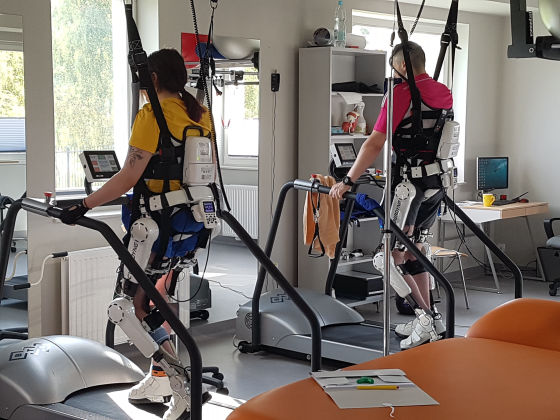 Further success in treating spinal cord injury depends on providing the patient with individual recovery (rehabilitation). It should include coordinated care, physical therapy, ongoing medical care, regular checkups, and consultations. This strategy aims to prevent complications and restore lost functions as soon as possible.
Further success in treating spinal cord injury depends on providing the patient with individual recovery (rehabilitation). It should include coordinated care, physical therapy, ongoing medical care, regular checkups, and consultations. This strategy aims to prevent complications and restore lost functions as soon as possible.
Doctors use several methods of cure for spinal cord injuries, including:
- Stretching - static movements significantly accelerate the recovery process;
- Transcranial magnetic stimulation (TMS) - magnetic fields stimulate nerve cells in the brain to relieve symptoms of depression;
- The Castillo Morales® concept begins with a holistic study of children with Down syndrome and aims to counter secondary pathologies. Numerous verbal and non-verbal approaches are used at all levels, considering children's needs.
- The Nintendo Wii Fit Video Trainer uses body movement to improve balance and muscle strength.
- Armeo Spring is an exoskeleton device with a built-in spring mechanism that provides adjustable gravity support for the upper limb.
- Functional electrical stimulation (FES) is a pine injury treatment in which small electrical charges are applied to a paralyzed or weakened muscle.
- Profound tissue massage benefits various conditions, including injuries, chronic pain, and diseases.
- Neuromuscular electrical stimulation with the device sends electrical impulses to nerves and causes muscles to contract.
- Acupuncture involves stimulating specific areas of the skin, usually by inserting thin disposable metal needles into points along the body's meridians to change the energy flow.
- Hydromassage is a therapeutic method that involves the use of water and jet pressure to facilitate the massage of muscles and other soft tissues of the body.
- Robotic gait training with Lokomat is walking on a treadmill with two power orthopedic prosthetic legs individually adapted to the patient's legs.
- HAL (Hybrid Assistive Limbs) is an exoskeleton that attaches to the outer body and provides the patient with additional functional support.
- The G-EO is a walking training system that helps patients regain strength and mobility.
- HandTutor system provides functional exercises for developing fine motor skills of the fingers and wrist and rehabilitation of the hand.
Over the past decade, robotic technologies have been included in the daily spine injury treatment schedule of many people. These technologies are promising because they allow therapists to identify and control movement characteristics such as speed, direction, amplitude, and joint coordination patterns.
Robotic rehabilitation is the treatment of spinal injuries using robotic devices. It includes the development of robotic devices designed to support various sensorimotor functions (for example, arms, hands, legs, and ankles, and the development of various schemes of assisted therapeutic training and assessment of sensorimotor activity).
Walking again after robotic rehabilitation
Robotic rehabilitation has not been implemented in spine injury treatment programs until now. Its more comprehensive application began in the last decade. But its advantages are already undeniable. Robotic devices provide safe, intensive, and targeted rehabilitation, allowing:
- precisely controlled assistance or resistance during movement;
- ensure good repeatability;
- increasing the motivation to learn through the use of interactive biofeedback.
Treatment of spinal injuries with the help of robotic systems gives encouraging results. For example, walking functions and movement speed when using an exoskeleton for the lower extremities are 2.2 times higher than when using an exercise bike.
Physiotherapists and occupational therapists positively assessed robotic rehabilitation. They also reported that patients enjoy the benefits of using robotic devices for spinal cord injury cure, increasing accessibility, independence, and comfort and significantly reducing rehabilitation costs. In addition, robotic rehabilitation reduces costs due to a short stay in rehabilitation centers.
Leading rehabilitation centers in Europe
Robotics has transformed rehabilitation clinics from labor-intensive to technology centers. AiroMedical company cooperates with many leading clinics worldwide. Below we present a selection of the best rehabilitation clinics in Europe. As an independent resource, our team offers rehabilitation centers that meet our requirements and criteria, ensuring that those looking for a spinal cord injury cure in Europe will receive it here.
Constance Care Robotic Rehabilitation Center
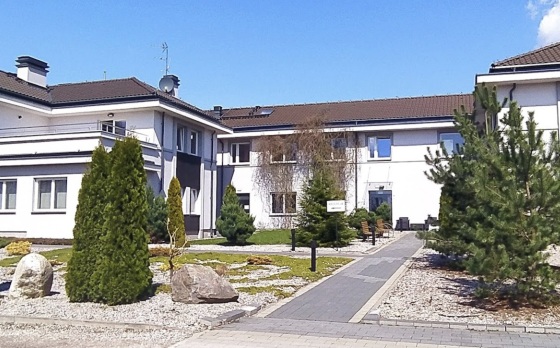 It is a neurological, orthopedic, and neuropsychological rehabilitation center near Warsaw. Since its foundation in 2015, the clinic has cooperated with leading medical equipment manufacturers, research institutes, hospitals, and medical partners. Among the partners is the Japanese company Cyberdyne Inc, a company of the University of Tokyo that produces robotic devices. That allows Constance Care to offer its patient’s spine injury treatment with an active HAL exoskeleton (hybrid auxiliary limb), G-EO System, HandTutor, ErgoTrainer, LiteGait, and Pelvictraine technologies. In addition, the company and the German University Hospital Bergmannsheil in Bochum implemented a project to introduce a new Cyberdyne HAL XXS device designed to rehabilitate children.
It is a neurological, orthopedic, and neuropsychological rehabilitation center near Warsaw. Since its foundation in 2015, the clinic has cooperated with leading medical equipment manufacturers, research institutes, hospitals, and medical partners. Among the partners is the Japanese company Cyberdyne Inc, a company of the University of Tokyo that produces robotic devices. That allows Constance Care to offer its patient’s spine injury treatment with an active HAL exoskeleton (hybrid auxiliary limb), G-EO System, HandTutor, ErgoTrainer, LiteGait, and Pelvictraine technologies. In addition, the company and the German University Hospital Bergmannsheil in Bochum implemented a project to introduce a new Cyberdyne HAL XXS device designed to rehabilitate children.
WALK AGAIN Center
 Based on Meoclinic is the first private center in Europe to provide rehabilitation using the HAL (Hybrid Assistive Limb) exoskeleton for people with impaired musculoskeletal functions. Currently, the main focus is on treatment after stroke, injuries, and diseases of the spine and spinal cord. Rehabilitation is suitable for patients in both acute and chronic periods. Soon, it will expand the range and provide rehabilitation opportunities for patients with neuromuscular diseases. Traditional therapeutic methods are combined with modern medical devices such as the LokomatPro and Armeo Spring (a device that works out hand movements while stimulating the central nervous system), with which a wide range of patients with severe and mild lesions can train the functions of the hand and hand.
Based on Meoclinic is the first private center in Europe to provide rehabilitation using the HAL (Hybrid Assistive Limb) exoskeleton for people with impaired musculoskeletal functions. Currently, the main focus is on treatment after stroke, injuries, and diseases of the spine and spinal cord. Rehabilitation is suitable for patients in both acute and chronic periods. Soon, it will expand the range and provide rehabilitation opportunities for patients with neuromuscular diseases. Traditional therapeutic methods are combined with modern medical devices such as the LokomatPro and Armeo Spring (a device that works out hand movements while stimulating the central nervous system), with which a wide range of patients with severe and mild lesions can train the functions of the hand and hand.
Schmieder Rehabilitation Clinic
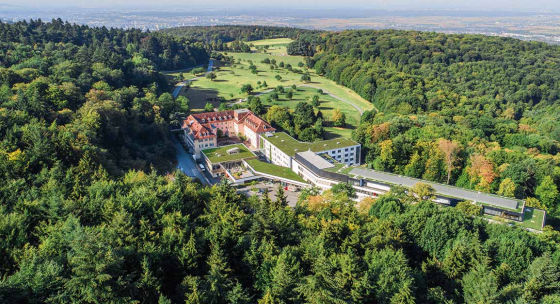 For more than 70 years, the Schmieder Clinic has been a leader in neurorehabilitation. Every year, more than 14.000 patients with various spinal cord injuries are treated in six branches in Baden-Württemberg. The main task of the clinic is to restore the patient's body as much as possible, eliminate motor disorders, and improve the quality of life. The clinic's slogan is "Never give up!" At the center, a specially trained and qualified team of doctors, therapists, and intensive care nurses works with the patient. They help to restore vital functions, sensorimotor skills, and coordination of movements, as well as mental, cognitive, and psychological functions.
For more than 70 years, the Schmieder Clinic has been a leader in neurorehabilitation. Every year, more than 14.000 patients with various spinal cord injuries are treated in six branches in Baden-Württemberg. The main task of the clinic is to restore the patient's body as much as possible, eliminate motor disorders, and improve the quality of life. The clinic's slogan is "Never give up!" At the center, a specially trained and qualified team of doctors, therapists, and intensive care nurses works with the patient. They help to restore vital functions, sensorimotor skills, and coordination of movements, as well as mental, cognitive, and psychological functions.
Where rehabilitation after a spine injury is also available?
Where should I start?
Effective treatment of spinal cord injuries, taking into account the current condition of a particular patient, may require the use of the entire complex or individual methods from the above list. AiroMedical organizes rehabilitation in the best clinics. We take care of everything before, during, and after treatment. You can choose your clinic and doctor or consult with our specialists. We will answer your questions about the spinal cord injury cure, doctors, and the cost of staying at the center. You will have complete information to decide on going to rehabilitation.
References:
- National Library of Medicine: Spinal Cord Injuries
- Cyberdyne: What´s Hal?
- WHO: Spinal cord injury
- Remedy Health Media: Spine Surgery After Spinal Cord Injury: Why Timing Matters
- Physiopedia: Therapeutic Interventions for Spinal Cord Injury
- Springer Nature: Robotic Restoration of Gait Function in Patients in the Early Recovery Period of Stroke



